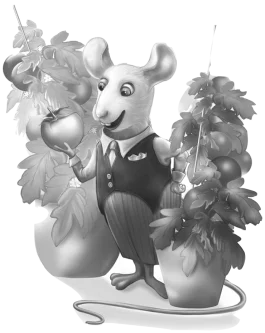Just to be clear here, I’m not a city gardener.
I live in the country. The closest city to us, here in far northern Vermont, is Burlington (population 42,000) which our oldest son, who lives in New York City (population 8.6 million), tells us barely deserves the name. When it comes to gardening, all I have to do is walk out the front door to find someplace to dig. If we had the time, energy, and inclination, we’ve got room for an acre of potatoes, a turnip field, and a couple of cows. Granted, I could do with a little less clay and a lot fewer rocks—this is, after all, Vermont—but the truth is that gardening, where we live, practically falls in our laps.
Not like all those city gardeners, who have to blast a hole in concrete to plant a tomato.
There’s a surprisingly lush literature on city gardening, and all of it describes the triumph of hope, optimism, and determination over great and awful odds. Take, for example, Rumer Godden’s now-classic An Episode of Sparrows, first published in 1955. The book’s main character is young Lovejoy Mason, a street kid from South London, who nicks a package of cornflower seeds and starts a garden in the rubble of a church that was destroyed in the Blitz. Rubble is lousy ground for plants, so Lovejoy’s passion for her hidden garden ropes in other kids from the neighborhood—notably Tip Malone, leader of the local gang of boys—and leads to stealing dirt from a local private park. But eventually—because of that charmer of a garden—there’s a wonderful and much-deserved happy ending.

Paul Fleischman’s Seedfolks begins with Kim, a young Vietnamese girl, planting six bean seeds in a vacant lot in Cleveland—which eventually inspires her neighbors, a multi-age and multiracial collection of people, all with different issues and problems—to collaborate in creating a supportive community garden. Sarah Stewart’s The Gardener is the picture-book story of young Lydia Grace Finch, shipped off during the Depression to help her Uncle Jim at his city bakery, where she ultimately makes her dour uncle smile by planting a marvelous roof-top garden in pots, tubs, and boxes.

And in Peter Brown’s picture book The Curious Garden—a great birthday-present pick for kids of every gardening parent and grandparent—young Liam finds a wilting wild-flower growing beside an abandoned railroad track and sets out to take care of it. As he experiments and learns, his small garden grows and blooms, spreading in both directions along the empty track—until an entire grim and lifeless city is gradually transformed into a vibrant green growing space.
Brown’s book was inspired by New York City’s real-life High Line, once an elevated railroad track on Manhattan’s West Side. After the rise of trucking put railroads out of business in the 1950s, the track was abandoned, and by the 80s was in danger of demolition. Protests, fundraising, and support from a lot of influential and wealthy people saved it and converted it into a one-and-a-half-mile-long, plant-filled park. This ultimately cost $153 million—a bit of a stretch from Liam and his red rubber boots and watering can, but you get the idea.
Urban gardeners, barring multimillionaire patrons, pretty much have two choices: pots or vacant lots.
The idea of planting gardens on vacant city lots dates to World War I, when the National War Garden Commission started urging people to plant vegetables in every available space, with the aim of alleviating the food shortage crisis in Europe. Over 5,000,000 people did so; and 25 years later, when food rationing hit during World War II, some 15,000,000 families picked up spades again and planted victory gardens. Boston Common and San Francisco’s Golden Gate Park turned themselves into urban farms, and Eleanor Roosevelt—despite protest from the U.S. Department of Agriculture—planted a vegetable garden on the White House lawn. Citizens of New York City collectively planted 400,000 victory gardens, including one along Park Avenue and another on Riverside Drive. The result was some 200 million pounds of tomatoes, beans, beets, carrots, lettuce, and Swiss chard.
Nowadays urban gardeners are more likely to be driven by a desire for healthful and local eating and sustainable lifestyles than by wartime food shortages. Restaurants maintain indoor herb gardens for their customers; hospitals plant rooftop gardens for their patients; families plant tomatoes and peppers in flowerpots on their balconies. Communities pitch in—Seedfolks-style—to turn vacant lots into raised-bed group gardens. According to the USDA, about 15% of the world’s food supply is now grown in cities.
Which in my opinion is no small feat. There’s more to victory than cabbages for World War II.
Aesop’s Fables are a collection of short stories with helpful moral end-tags, generally (though possibly erroneously) attributed to Aesop, a storytelling slave from ancient Greece in the sixth century BCE. Among these is the tale of the Country Mouse and the Town Mouse, in which Country Mouse gets the Aesopian seal of approval. In the story, the two mice visit back and forth. Sophisticated Town Mouse finds the country uncivilized and the food dull; far-less-cool Country Mouse finds the town awesome and the food scrumptious—but town is populated by terrifying and life-threatening cats and dogs. The take-away lesson is that peace and safety, even with awful cooking, are preferable to stress and danger, accompanied by a feast.
Well, maybe. But now imagine those mice as gardeners.
There’s Country Mouse, in overalls, sitting on the back porch, sipping lemonade, placidly growing beans. And then there’s Town Mouse fending off cats, dogs, rats, traffic, pedestrians, vandals, gravel, asphalt, skyscrapers, and city ordinances while struggling to nurture every sprouting lettuce leaf. Country Mouse is my kind of people—but, from a garden standpoint, Town Mouse is a hero.
More than 100,000 square miles of the U.S. is urban, a number that’s expected to triple during the next three decades—but due to city gardeners, more and more of that urban space is turning green. Detroit, Michigan—home to a depressing 200,000 abandoned lots—now has over 1300 community gardens. Chicago (city of Al Capone) is promoting rooftop farms, apiaries, and farmers markets. Boston (worst highway congestion in the country) encourages vacant-lot and rooftop gardens, and lets city-dwellers raise chickens and bees.
Gardening in the city is a triumph over odds that those of us in the laid-back boonies never come up against. You’ve got to give a lot of credit to those city gardeners, doggedly planting where, by all rights, no garden is supposed to grow, fighting off pavement, trash, and taxi exhaust.
Those city gardens—they’re all victory gardens. ❖


 Previous
Previous

